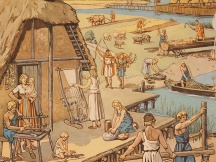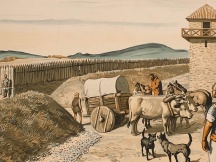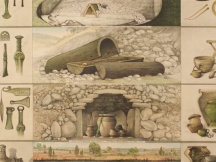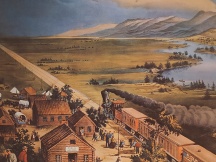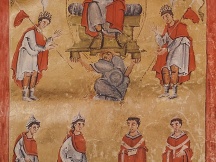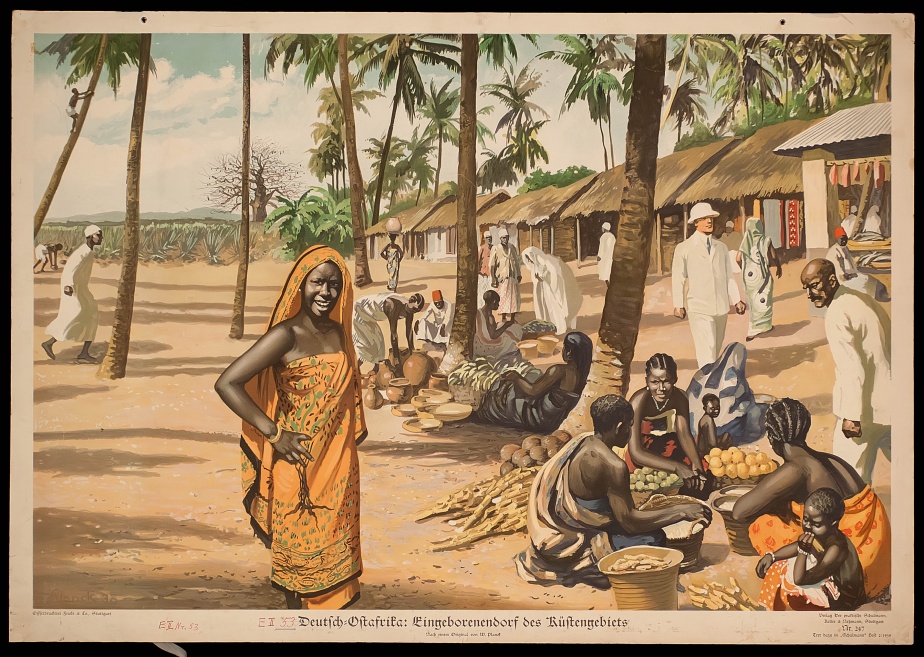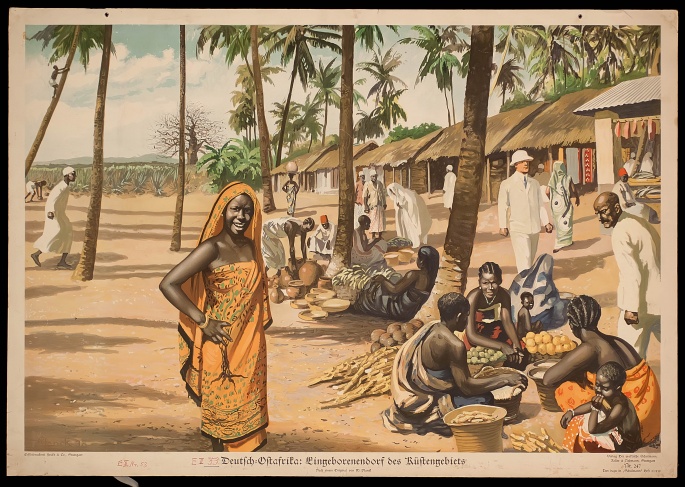Series: |
Der praktische Schulmann |
|---|---|
Timeframe: |
Langes 19. Jahrhundert |
Scene of action: |
Unknown |
Illustrator: |
Planck, W. |
Publisher: |
Der praktische Schulmann, Keller und Nehmann, Stuttgart |
Year of publication: |
1939 |
Themes: |
The picture shows a small fruit and vegetable market in the former colonial territory German East Africa (Tanzania, Burundi, Rwanda). From 1885 to 1918 German East Africa was the largest colony of the German Empire (1971-1918). Some natives are sitting under a coconut-tree, a white man who is clearly distinguished by his white clothes and hat is passing by. The men’s’ white and red hats (Fes) refer to the Arabic influence in the coastal regions. The group of women sitting on the ground with baskets full of fruits and earthenware jugs produces a peaceful impression. Concerning the Arabic insurrection against the German East Africa Company, cruelly defeated by the German Marine and a mercenary force, the serenity of the scene is excessively optimistic and serene.
